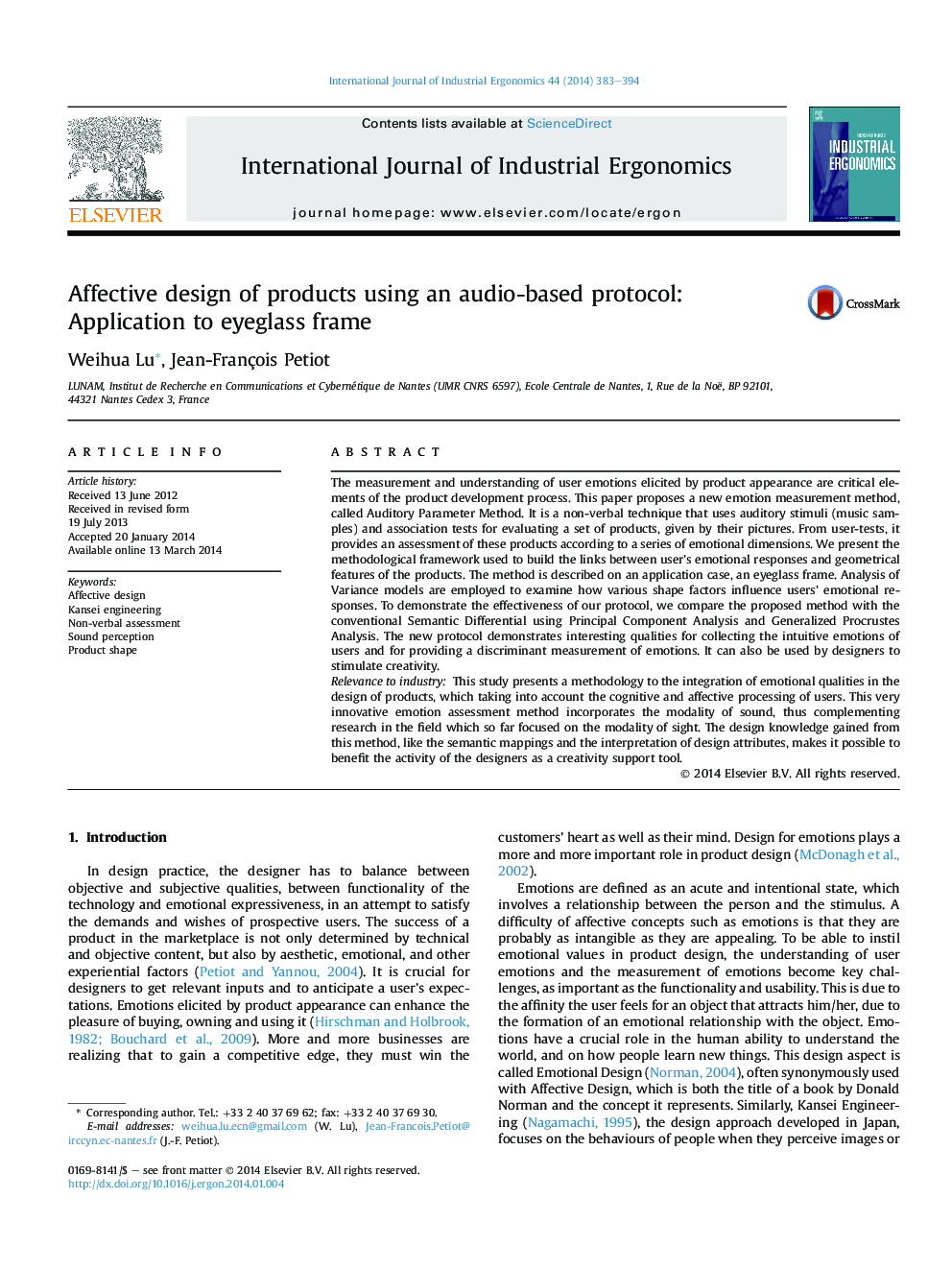| Article ID | Journal | Published Year | Pages | File Type |
|---|---|---|---|---|
| 1096100 | International Journal of Industrial Ergonomics | 2014 | 12 Pages |
•A new non-verbal emotion measurement method is proposed.•The modality of sound is incorporated as universal assessment scale.•A computer interface is introduced to support data acquisition.•Effectiveness of AP Method verified in comparison with SD Method.•Interpretation of AP results to support design practice.
The measurement and understanding of user emotions elicited by product appearance are critical elements of the product development process. This paper proposes a new emotion measurement method, called Auditory Parameter Method. It is a non-verbal technique that uses auditory stimuli (music samples) and association tests for evaluating a set of products, given by their pictures. From user-tests, it provides an assessment of these products according to a series of emotional dimensions. We present the methodological framework used to build the links between user's emotional responses and geometrical features of the products. The method is described on an application case, an eyeglass frame. Analysis of Variance models are employed to examine how various shape factors influence users' emotional responses. To demonstrate the effectiveness of our protocol, we compare the proposed method with the conventional Semantic Differential using Principal Component Analysis and Generalized Procrustes Analysis. The new protocol demonstrates interesting qualities for collecting the intuitive emotions of users and for providing a discriminant measurement of emotions. It can also be used by designers to stimulate creativity.Relevance to industryThis study presents a methodology to the integration of emotional qualities in the design of products, which taking into account the cognitive and affective processing of users. This very innovative emotion assessment method incorporates the modality of sound, thus complementing research in the field which so far focused on the modality of sight. The design knowledge gained from this method, like the semantic mappings and the interpretation of design attributes, makes it possible to benefit the activity of the designers as a creativity support tool.
